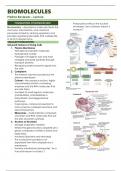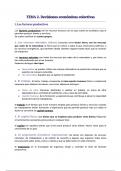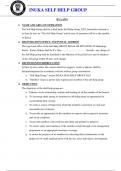Class notes
Biochemistry - Reviewer
- Course
- Institution
- Book
Unlock the secrets of life with our meticulously crafted notes on Biomolecules and Biochemistry! Dive deep into the molecular foundations of living organisms, exploring the intricacies of proteins, carbohydrates, lipids, and nucleic acids. Our comprehensive notes distill complex concepts into diges...
[Show more]





